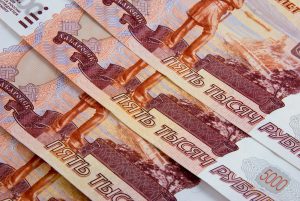Remittance flows to Central Asia are likely to be severely affected by the Russian invasion of Ukraine, and the subsequent sanctions on Russia, as a recent article by a pair of World Bank analysts makes clear.
In a March 4 article, Dilip Ratha, lead economist for migration and remittances and head of KNOMAD, and financial analyst Eung Ju Kim write that based on initial assessments of the decline of economic activity in Russia and the weakening of the ruble, remittances to Central Asia are now expected to decline by 25 percent.
Original projections of growth in remittances for 2022 — the great promise of recovery after the worst of the COVID-19 pandemic — have been replaced with declines. The most remittance-dependent country in the region at present is Kyrgyzstan. Remittance flows to the country in 2020 amounted to 31.3 percent of GDP. More than 80 percent of remittances sent to Kyrgyzstan come from Russia. Originally the World Bank forecasted that remittances would grow by 3 percent in 2022; that estimate has now been adjusted to a devastating decline of 33 percent. Uzbekistan and Tajikistan are similarly expected to see severe declines of 21 and 22 percent, respectively, instead of growth.
Ratha and Kim write that “[t]here will be a two-fold impact on remittance flows to Central Asia.” First, the “weakening of economic activity in Russia would dampen the employment and incomes of migrant workers and their ability to send remittances.” With Russia’s economy under pressure, it’s likely there will be fewer job opportunities for migrant workers; wages may also be depressed. Second, they note that the weakening of the ruble against the U.S. dollar “would reduce the nominal US dollar value of remittances sent in rubles.” In essence, what remittances Central Asians are able to send back to the region will be worth less. In addition, sanctions on the Russian banking system may hamper the transfer of remittances through official channels, potentially leading to a shift toward informal and indirect means of transferring money.
According to Ratha and Kim’s analysis, ironically Ukraine is the only country in the wider region that may see positive growth in remittance flows as a result of two facts: Only 5 percent of Ukraine’s remittances in 2021 came from Russia and the war has now seen more than 2 million Ukrainians forced to flee, many to comparably richer countries in Europe. More are expected to migrate west rather than east now, and as such remittance flow values can be expected to rise.
Central Asians are in a difficult spot, given the dependence and integration of regional economies with Russia. It’s worth reflecting on the economic and social impacts of previous economic downturns in Russia for a sense of what’s to come. Following the 2014 annexation of Crimea, sanctions guided Russia’s economy into a recession, which by 2015 had begun to seep into Central Asian economies, too — with the most severe impacts being felt at the time by Kazakhstan, which was also affected by a drop in global oil prices. By 2016, for example, Kazakhstan’s GDP growth had fallen to a mere 1 percent. That year Kazakhstan saw some of its largest protests, which many observers directly linked to socioeconomic issues.
In April 2016, when the International Monetary Fund projected another bad year for Central Asian economies, it stated: “The sustained decline in oil prices, Russia’s recession, and the slowdown and rebalancing of China’s economy are weighing on growth in the Central Asia and Caucasus region by suppressing exports, remittances, and investment.”
One can imagine a similar economic storm, taken to an extreme in the year to come. While oil prices are soaring at the moment, with U.S. President Joe Biden expected to ban Russian oil and gas imports it’s not clear that Russia will benefit from those higher prices. And Central Asian exporters may not either. As David O’Byrne covered this week in an article for Eurasianet, “Kazakhstan relies on Russia to export most of its crude oil.” That oil is piped through Russia to a Black Sea port in what is now essentially a war zone and typically shipped to Odessa and into Europe.
Ratha and Kim note that their current projections have a high degree of uncertainty, “dependent on the scale of the military conflict in Ukraine and the effectiveness of the sanctions on outward payments from Russia.” Whatever the outcome and the timeline, Central Asia’s economies will not come away from the war in Ukraine unscathed.

































